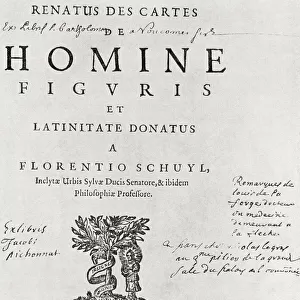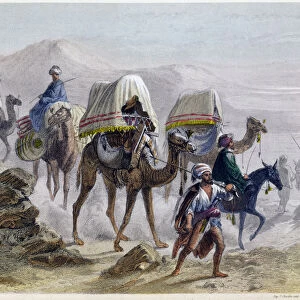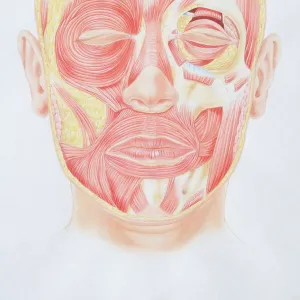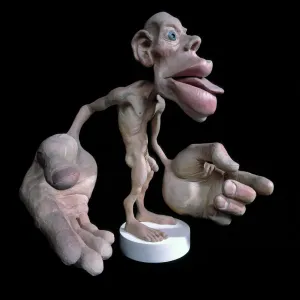Home > Arts > Minimalist artwork > Monochrome artwork > Fine art
Descartes idea of vision, 1692
![]()

Wall Art and Photo Gifts from Heritage Images
Descartes idea of vision, 1692
Descartes (1596-1650) idea of vision, [1692]. The passage of nervous impulses from the eye to the pineal gland and so to the muscles. From Rene Descartes Opera Philosophica (Tractatus de homine), 1692
Heritage Images features heritage image collections
Media ID 14863995
© Oxford Science Archive / Heritage-Images
Anatomy Biology Brain Descartes Eyes Eyesight Human Body Nervous System Oxford Science Archive Physiology Rene Rene Descartes Sight Vision Gland Nerve Pineal Gland
FEATURES IN THESE COLLECTIONS
> Arts
> Minimalist artwork
> Monochrome artwork
> Fine art
> Arts
> Minimalist artwork
> Monochrome artwork
> Monochrome paintings
EDITORS COMMENTS
This print showcases Descartes' groundbreaking idea of vision, dating back to 1692. René Descartes, a renowned French philosopher and mathematician from the 17th century, proposed a revolutionary concept regarding the passage of nervous impulses from the eye to the pineal gland and subsequently to the muscles. This woodcut illustration is extracted from his seminal work "Opera Philosophica (Tractatus de homine)". The image portrays a male figure representing human anatomy, with intricate details highlighting various components such as the brain, face, eyes, and nerves. The artist skillfully captures Descartes' theory on vision by emphasizing the connection between these elements. The eye serves as an essential gateway for visual information that travels through nerve pathways towards the pineal gland—a small endocrine organ located deep within our brains. Descartes believed that this journey of nervous impulses ultimately leads to muscle movement in response to what we see. His profound insights into physiology laid significant foundations for understanding sight and perception in biology. This monochrome black-and-white print not only offers us a glimpse into Descartes' pioneering ideas but also provides historical context about scientific advancements during this period. It stands as a testament to humanity's quest for knowledge and our continuous exploration of how our bodies function.
MADE IN AUSTRALIA
Safe Shipping with 30 Day Money Back Guarantee
FREE PERSONALISATION*
We are proud to offer a range of customisation features including Personalised Captions, Color Filters and Picture Zoom Tools
SECURE PAYMENTS
We happily accept a wide range of payment options so you can pay for the things you need in the way that is most convenient for you
* Options may vary by product and licensing agreement. Zoomed Pictures can be adjusted in the Cart.
















